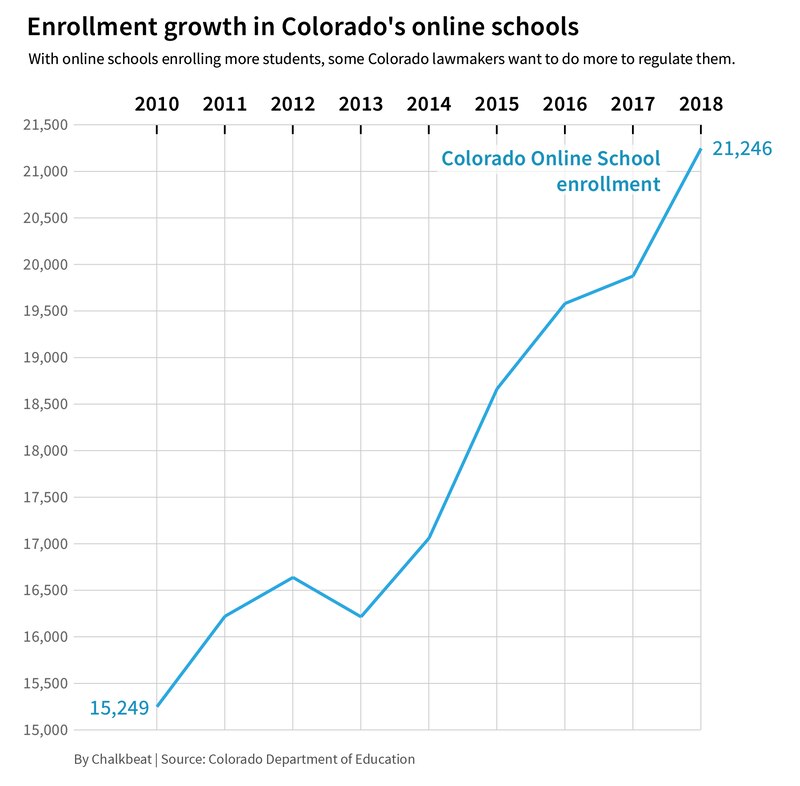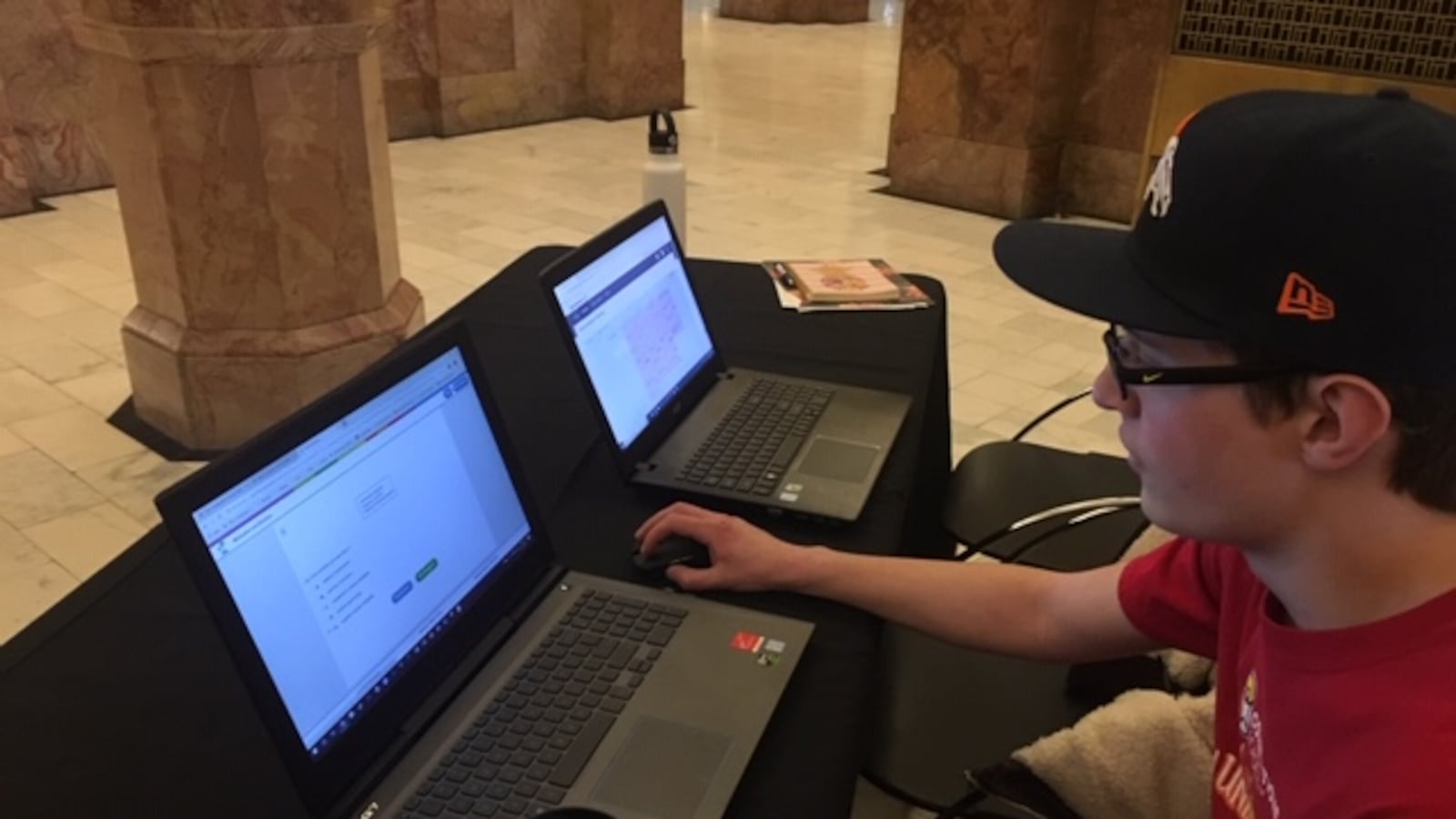Tyler Landsparger will head to Penn State in the fall to study meteorology.
It will be the first time the 17-year-old from Aurora is in a traditional classroom setting, because he’s been taking classes online since kindergarten.
“The teachers are awesome,” Tyler said. “They’re so nice, so knowledgeable. … The biggest thing is you have schedule flexibility.”
But some are wondering whether there’s enough accountability in that flexibility provided by online schools as their enrollment grows.
Lawmakers want to get more information about enrollment at multi-district online schools beyond the statewide October pupil count. The Senate Education Committee will consider a bill requiring more reporting to the state and legislature on Wednesday.
“It’s important to have an understanding of what happens to kids when they leave online schools,” said Sen. Tammy Story, a Conifer Democrat sponsoring Senate Bill 129. “Are they getting an education?”
Mostly, lawmakers want to find out what happens to students who leave the schools — because of the fear that not all students are headed to a major university as Tyler is. So they want to know whether students are transferring to other schools, being home schooled, getting high school equivalency degrees, or dropping out.
Enrollment in online schools increased 40 percent from 2010 to 2018, to more than 21,000 students. Still, that’s less than 3 percent of the state’s total K-12 enrollment.
“It would not be uncommon to see higher mobility in online schools as compared to brick-and-mortar schools,” said Bill Kottenstette, executive director of schools of choice at the Colorado Department of Education. “People might have different interpretations for why that’s the case.”
Many of the online schools fare poorly in state evaluations. Little more than half of the 42 online schools received one of the top two ratings. And 31 percent didn’t have enough data to be rated.
In fact, Colorado’s GOAL Academy was labeled a “virtual mess” in a 2016 Education Week story about online schools. A 2018 report by education reform advocacy group A Plus Colorado cited the growing enrollment of online schools in the state. It noted that districts with heavy online enrollment don’t perform as well as those with more brick-and-mortar schools. It mentioned the Byers district on the Eastern Plains, where 82 percent of the students study digitally but academic growth is among the lowest in the state.
“They’re successful in growing,” said Kevin Welner, director of the National Education Policy Center at University of Colorado Boulder. “They’re not particularly successful in having kids learn.”
But Welner said research shows that success depends on the student and their support system.
“Students have to be either self-directed or have strong supervision within the home,” he said. “A lot of students who were enrolled don’t have the resources or the approach to learning that they would need to be successful.”

SB 129 focuses on multi-district schools. They are typically based in a specific school district but may enroll students from any district. National, for-profit companies — including K12 Inc., Connections Academy and others — often operate the multi-district schools.
The state education department’s Kottenstette said he senses that Colorado regulates online schools better than many states do. One Indiana virtual school, for example, enrolled 10,000 students in a single year. But only 851 lasted for the entire year.
Yvette Harrison and her 15-year-old son, Clay Wedel, are the sort of team online school works for. Clay is a sophomore who began online school this year while also attending Community College of Denver.
“I love the idea that he’ll have his (associate’s degree) before he even gets his high school diploma,” Harrison said. “He’s a really smart kid, and it’s really hard for him to connect with kids his age.”
But Matt Cook, director of public policy and advocacy for the Colorado Association of School Boards, said school districts want data that goes beyond anecdotes.
“Online schools are a great option for a lot of kids,” Cook said. “I think there was just a desire to get some additional information about how students access online schools, how long they were there.”
In December, five of the 42 online schools received a state ranking of priority improvement, the second lowest. Schools that receive “priority improvement” or “turnaround” status for five years in a row face state intervention, including possible closure.
They are:
- Hope Online Learning Academy Elementary, in Douglas County, in its eighth year on the list. The school was on a turnaround plan in 2015.
- Elevate Academy High School, in Byers, in its third year on the list.
- Colorado Connections Academy, operated by Mapleton, in its third year on the list.
- Bolt Academy, of District 27J in Brighton, in its first year on the list.
- Denver Online High School, in its first year on the list.
The number compares with 11 online schools rated for priority improvement and five schools rated as turnarounds in 2013, according to a 2014 report on online schools by the Colorado Department of Education. That’s the last such report done, with the next one due in June.

